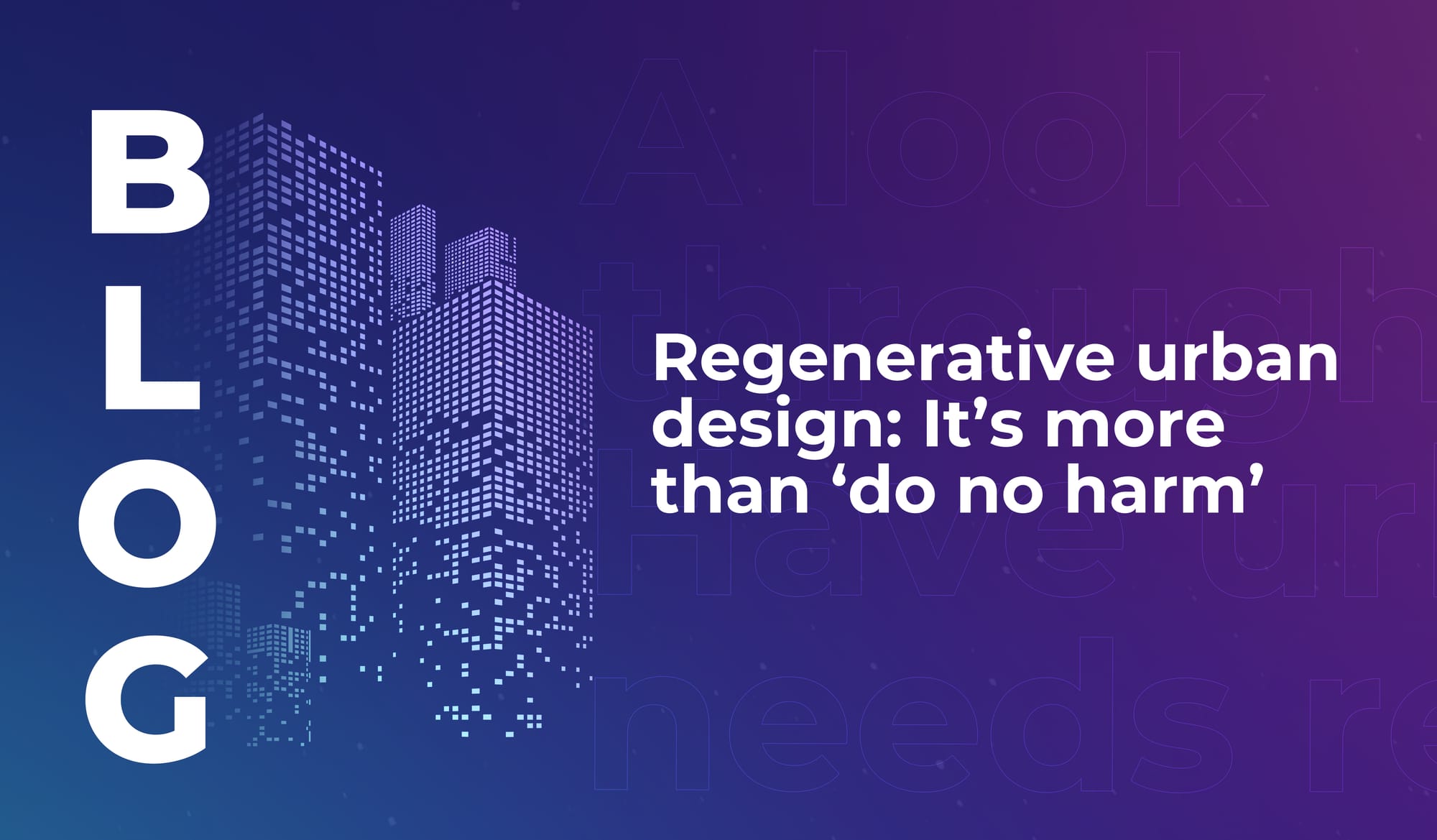
Powerful perspectives from the LEAP community
Discover four powerful perspectives from LEAP 2025 speakers on creativity, clean mobility, education, and personal branding to guide your strategy for 2026.


For decades, sustainable urban development has been defined by the idea of doing less harm. The message is that we have to reduce emissions, conserve energy, and limit environmental degradation.
But cities around the world are beginning to take this a step further. Instead of simply minimising impact, they’re now aiming to restore, revitalise, and regenerate.
We’re entering the era of regenerative urbanism. It’s a shift in how cities are designed, built, and managed – leveraging sophisticated tech to support biodiversity and human wellbeing in urban environments.
We’re taking a look at some of the regenerative urbanism initiatives that are already having an impact.
Labrador Tower is a new development in Singapore that exemplifies regenerative principles. As reported by Business Insider, this 34-storey, mixed-use tower features a centralised water-cooled chilled water system with underground thermal energy storage, designed to reduce cooling energy use significantly.
The building also uses hybrid active chilled beams and AI-driven microclimate controls to deliver air conditioning in a highly efficient way. These systems, combined with smart daylight sensors, reduce the building’s heat load by more than 40%.
Green roofs, multiple sky terraces, and the seamless integration of biodiversity-friendly spaces all contribute to what could be described as a living building – one that restores as much as it consumes.
It’s just one example of what’s possible when modern design integrates sustainability at every stage.
We’re launching LEAP East in Hong Kong next year – so naturally, we’re keeping a close eye on city tech developments in the area.
Hong Kong’s new I·PARK1 facility takes a different approach to regeneration. Instead of burying municipal waste in landfills, it transforms it into clean energy.
With a daily processing capacity of 3,000 tonnes, I·PARK1 uses advanced incineration, air pollution controls, and mechanical recycling systems to generate around 480 million kWh of electricity per year – that’s enough to power 100,000 households, according to Hong Kong’s Environmental Protection Department.
What makes it regenerative, however, is not just the energy recovery. The plant is located on a reclaimed island and includes marine conservation efforts like coral translocation, ensuring that biodiversity isn’t sacrificed in the name of progress.
It’s an example of a city actively designing infrastructure that not only limits damage, but also fosters ecological repair.
When we interviewed Kris Libunao (Executive Director and Chief Sustainability Officer at SmartCT), she noted that shifts towards sustainable smart cities are necessary; but they’re incomplete unless supported by systemic collaboration and inclusion.
“Private and public entities have to embrace openness if they want to improve the development of smart cities. That is: open data, collaboration, and inclusivity,” she said. “Everyone should have access to smart city development, regardless of socioeconomic status or technological proficiency.”
Regenerative urbanism, then, isn’t just about buildings and green roofs. It’s about creating equitable access to technology, education, and services. Libunao added:
“Sustainability is the secret ingredient in smart city development. The real kicker is that if we don't prioritise sustainability, we can wind up doing more harm than good. We might make environmental problems worse, expand the wealth and digital divide, and neglect the social issues that really matter.”
As a Certified Sustainability Practitioner, Libunao sees her role as guiding both corporations and city-makers through this complex landscape.
“Certified Sustainability Practitioners are the professionals who assist businesses in providing direction, develop strategies, and ensure that sustainability plans are carried out.”
But this is no easy role. Persuading people to put sustainability above short-term gains is a major challenge, demanding behavioural change as well as organisational reform.
This is where regenerative urbanism truly diverges from past sustainability models. Because for regenerative urbanism to really take hold, it needs systemic transformation to enable sustainable development – not just measures to limit the negative impact of cities.
Cities across Europe, Asia, and the Middle East are exploring regenerative urbanism in practice:
These projects show that regenerative urbanism is an evolving global practice, and quickly gaining momentum. It’s about cities getting smarter about how they heal, both environmentally and socially.
As Libunao said, “the path to sustainability in smart cities is not easy. We must alter our mindsets, increase awareness, and manage complex systems. This is why sustained collaboration at the onset of any smart city project is crucial.”
Regeneration requires vision, partnership, and a willingness to prioritise long-term value over short-term convenience. And if more cities adopt this mindset, the future might just be not only smart – but genuinely regenerative.

Discover four powerful perspectives from LEAP 2025 speakers on creativity, clean mobility, education, and personal branding to guide your strategy for 2026.

Discover four unexpected insights from LEAP speakers – on tech, leadership, investment, and innovation – that challenge assumptions and inspire new ways of thinking.

The global space sector is hiring faster than universities can produce graduates. If you’re an early-career technologist considering a career in space, this is for you.

Discover four powerful perspectives from LEAP 2025 speakers on creativity, clean mobility, education, and personal branding to guide your strategy for 2026.

Discover four unexpected insights from LEAP speakers – on tech, leadership, investment, and innovation – that challenge assumptions and inspire new ways of thinking.

The global space sector is hiring faster than universities can produce graduates. If you’re an early-career technologist considering a career in space, this is for you.